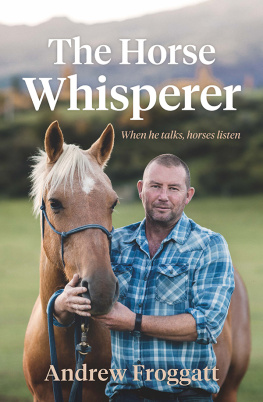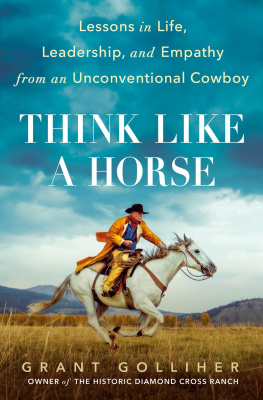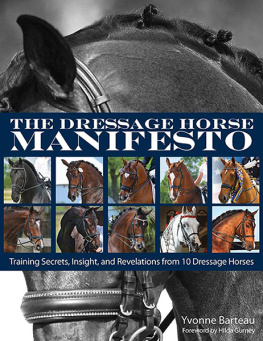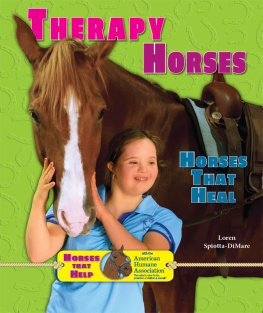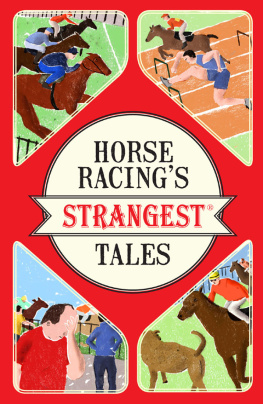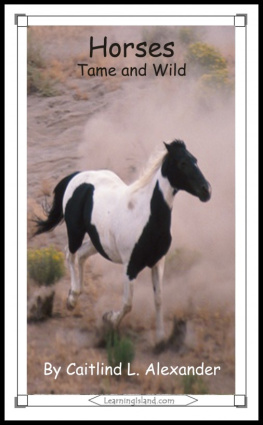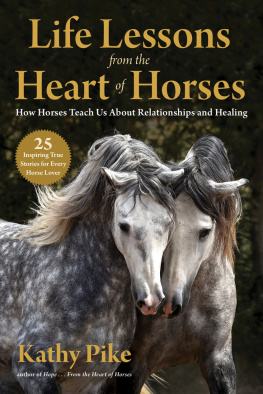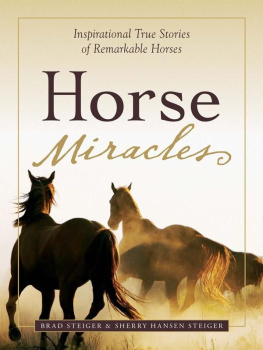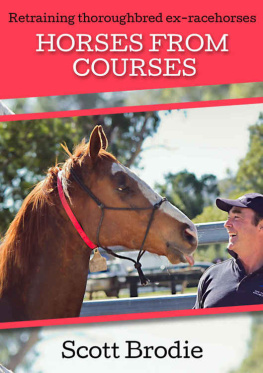In the chapter, The person within: Horses as friends, pages 191205, the four girls real names have not been used.
First published in 2016
Copyright Andrew Froggatt 2016
All rights reserved. No part of this book may be reproduced or transmitted in any form or by any means, electronic or mechanical, including photocopying, recording or by any information storage and retrieval system, without prior permission in writing from the publisher.
Allen & Unwin
Level 3, 228 Queen Street
Auckland 1010, New Zealand
Phone: (64 9) 377 3800
Email:
Web: www.allenandunwin.co.nz
83 Alexander Street
Crows Nest NSW 2065, Australia
Phone: (61 2) 8425 0100
A catalogue record for this book is available
from the National Library of New Zealand
ISBN 9781877505676
eISBN 9781952534782
Internal design by Kate Frances Design
Cover design by Kate Frances Design
Cover photographs by Emily Adamson
Set by Midland Typesetters, Australia
Contents


Its early morning in the valley of Dalefield. Coronet Peak tops the tawny hills to the north, and the jagged grey peaks of the Remarkables frame the sky to the south. I call quietly to Chance, my twelve-year-old bay mare. She comes almost without my asking, happy to see me after a cold night under the stars. I pull off the rug which has been protecting her from the chill of the Wakatipu night. Theres a good girl, I tell her, using the same voice I use with my seven-month-old daughter, Tilly. Chance stands still while I rub her forehead. I know she loves the touch.
Bobby, our little black labrador puppy, is rolling around at Chances feet, hoping to get some attention. But Chance barely has eyes for Bobbyshes looking at me. I am just beginning the process of taking her from being a brood mare, which she was for a long time, to being a demonstration horse. In the leadership courses I teach, the demonstration horses show my clients what theyll be able to do with their own horse. My horses always have a little something extra and help people to appreciate how amazing horses can be.
Many years ago Chance was brought to me as a talented horse who finished races in last place. With the right care and training, she became a race-winning horse, then as a brood mare she produced a beautiful son named Cool Guy. Hes also destined to be a racehorse. For a while Chance might have forgotten she was a race-winner, but were working on waking it up in her again.
Chance has spent the last five years more or less as a paddock mate, watching the other horses have their moment in the sun. Now she is coming into her own again. In the arena her long brown legs lift her up gracefully, and when I ask, she slows and comes to a complete stop just before my hand. Can she do this every time? No, not yet. Does she know me so well she can tell what I want from her by the way I hold my head? No, not yet. Will we get there? Absolutely. Ive never had a horse who didnt.
When people ask me what I do I tell them I teach personal development and leadership through horses. When they ask me what I can do, though, the answer is a little different.
I can get something from a horse few other people can, as I seem to understand them in a way that is more like speaking their language than speaking ours. Its what is sometimes called horse whispering. I prefer to think of it as having a good dose of horse sense and taking the time to get to know the horse really well.
Im not a fan of books in which the great horse whisperer tells you about all the famous peoples horses in whose big ears hes whispered, but never tells you anything practical or useful. My hope with this book is that if youre someone who loves horses, from close up or afar, therell be something in it of use to you. And even if you have never spent time with horses at all, but are interested in leadership or relationships, I hope this book will be just as useful. Although I began my career working with so-called problem horses, today a big part of what I do is about using horses to help people, and my partner Sam and I have a business we call Lead the Way. Whether its business leaders, athletes or troubled young people, horses are a brilliant way to help people gain confidence and learn about themselves.
I still work with troubled or difficult horses, and theres no greater joy than in helping a horse to become happy and reach its potential. Ive never met a horse who couldnt learn. Ive never met a horse whose problems I couldnt fix, though some take more time than others. I truly believe the horses are grateful to me for helping them. The last thing they want is to spend their lives full of tension and worry, so if I can release a lot of their baggage they can move through life happier. I want to give them the confidence to handle lifes surprises, so they can live peacefully, knowing that when they think and use their brains, they can handle any situation. It probably applies to people, too, though I confess I tend to have a lot more patience with horses than I do with people. Maybe by talking less, horses say more. They can certainly communicate, and I am always keen to listen to what they have to say.
With no words at all, horses can teach us about consistency, trust, communication and leadership. Above all, horses teach us about relationships. The only limitations are our willingness to learn, and time. I have been very lucky over the years to have had the privilege of learning from some amazing horses.

The first horses to arrive in New Zealand, a stallion and two mares, landed at Rangihoua in the Bay of Islands with the missionary Samuel Marsden, on 22 December 1814. Marsden was the great-great-great-uncle of my partner, Sam, so we feel a strong sense of connection to the man who introduced horses to this country. Amazingly, less than a hundred years later there were over 400,000 horses in New Zealand.
Today, it is estimated New Zealands horse population is somewhere around 120,000, with 40,000 in the racing industry, the rest being recreational or work horses of some kind. Though there are few true wild horses, every horse who will eventually be ridden needs to be broken in, or started. Thats where people like me come in.
There are a few terms used around the subject of breaking in that are worth talking about. The very phrase breaking in has negative connotations for some people, because obviously something gets broken during the processmaybe the horses spirit. Today some use the term taming to refer to the first parts of the process, then touching and handling for the later stages. I tend to think about what I do as starting a horse, though at times I use all the different terms interchangeably. To me its all about starting a horse out right.
About ten years ago I had the privilege of starting twelve wild horses at Mt Nicholas Station, one of the twelve stations which ring Lake Wakatipu. Its a huge station, over 40,000 hectares, and the only road access is either via the neighbouring Walter Peak Station or through the back road that leads out to Mavora Lakes. Back in the day it was serviced by the old steamer TSS Earnslaw, but today Southern Discoveries red and white catamarans carry visitors across the lake. Its a pretty spectacular spot.
Back then I was based about an hour up the coast from Wellington. We had a Canadian farrier who was also a hunting guide and regularly took people deerstalking around the back country near Queenstown. One day, when he was putting shoes on the horses for us, he asked me if I knew anyone who might want to come down to Queenstown, as he was doing a lot of hunting at Mt Nicholas Station, and they had some beautiful horses out in the mountains. The old guy who used to break in the stations horses for them had died, but they had continued to breed the horses and now they were everywhere.

